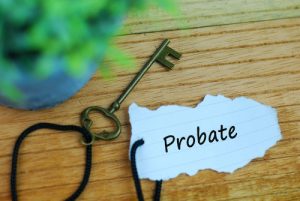 Court rules and requirements regarding probate procedure overwhelm people. However, probate courts often respond to these rules differently. Accordingly, the following information covers generalities about California probate. Please refrain from referring to them as a treatise. These guidelines offer an idea about what many probate courts require. Seek the advice of counsel before filing any court documents.
Court rules and requirements regarding probate procedure overwhelm people. However, probate courts often respond to these rules differently. Accordingly, the following information covers generalities about California probate. Please refrain from referring to them as a treatise. These guidelines offer an idea about what many probate courts require. Seek the advice of counsel before filing any court documents.
 To begin probate in California, file a petition for probate in the Superior Court in the decedent’s most recent county of residence. You may wish to prepare the petition yourself. The phrase “in propria persona,” means “for one’s self” in Latin. However, attorneys file most such petitions. Estate attorneys representing the executor or the administrator of the estate most often file.
To begin probate in California, file a petition for probate in the Superior Court in the decedent’s most recent county of residence. You may wish to prepare the petition yourself. The phrase “in propria persona,” means “for one’s self” in Latin. However, attorneys file most such petitions. Estate attorneys representing the executor or the administrator of the estate most often file.
California Probate Process
 The probate process is filled with requisite forms. The Petition for Probate (Form DE-111) is available online. The court will not open probate without the filing of the DE-111. This form requires a great deal of information. For example, the form requires information about the decedent, and the executor or administrator. It also requires information about the beneficiaries named in the will. What’s more, it asks for information about the heirs at law. Requirements also include information about the monetary value of the estate and the status of a bond requirement.
The probate process is filled with requisite forms. The Petition for Probate (Form DE-111) is available online. The court will not open probate without the filing of the DE-111. This form requires a great deal of information. For example, the form requires information about the decedent, and the executor or administrator. It also requires information about the beneficiaries named in the will. What’s more, it asks for information about the heirs at law. Requirements also include information about the monetary value of the estate and the status of a bond requirement.
Form DE-111 for California Probate
On the form, you indicate whether a will exists. What’s more, you will note whether you have access to it. Also, you must indicate whether the request is for “Letters of Administration” and whether the letters come with or without general powers. Other items to detail include where you wish to publish. And you will indicate whether you or the court will arrange for said publication. You will also inform the court about which county the decedent resided in prior to death.
Heirs for California Probate
 Other information includes whether the decedent was survived by a spouse. And if so, whether the spouse died. Additional information includes data about children, including whether they are natural or adopted. Find out whether predeceased children of the decedents live. And ask if they had any children of their own.
Other information includes whether the decedent was survived by a spouse. And if so, whether the spouse died. Additional information includes data about children, including whether they are natural or adopted. Find out whether predeceased children of the decedents live. And ask if they had any children of their own.
Petition for Probate
When you file the Petition for Probate with the court, the court clerk assigns a hearing date. You must give notice of the hearing date for the petition. To do so, you will use probate form DE-121, entitled “Notice of Petition to Administer Estate.” On this form, you enter the date, time, department, and room number for the hearing. You will also provide notice of the hearing by mailing a copy of the notice to each entitled person and entity. Or, if you prefer, you can hand-deliver a copy of the notice to the required recipients. Adhere to timelines for mailing and personal delivery. Also, check the court rules and probate code for mailing and delivery requirements. What’s more, file a copy of the Petition for Probate with the Notice of Petition.
As the executor or personal representative, you cannot personally mail or deliver copies of the notice. Instead, engage someone else. They must not be a party to the proceeding. Fill out a proof of service form must and file it with the court. Also, we recommend you include a copy of the Petition for Probate with the Notice of Petition.

